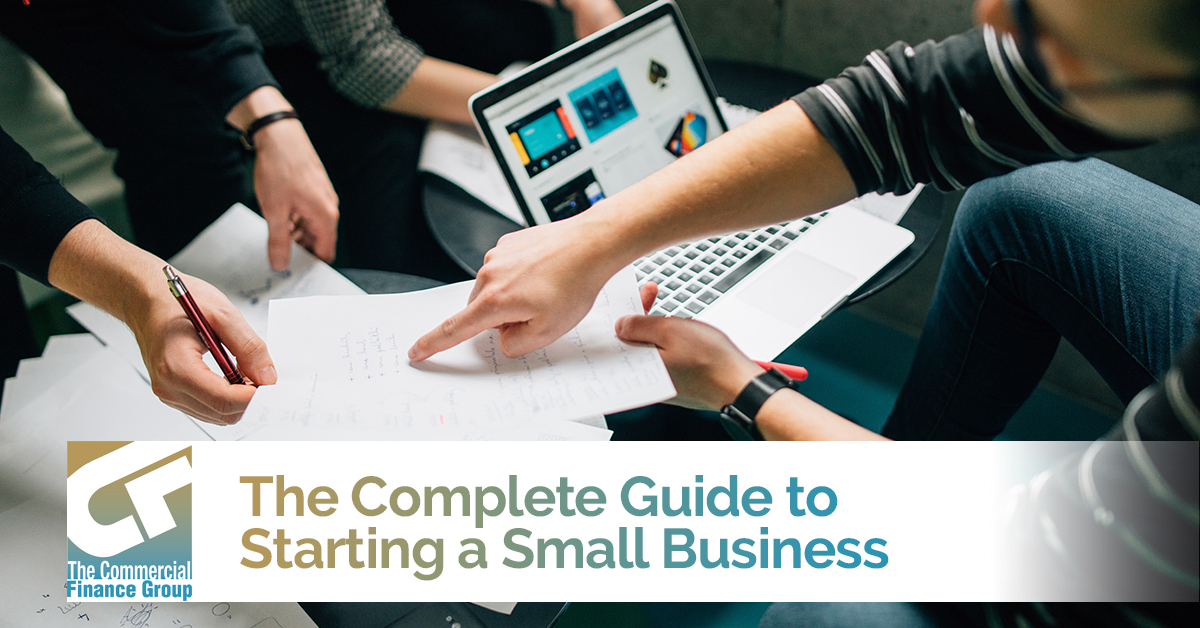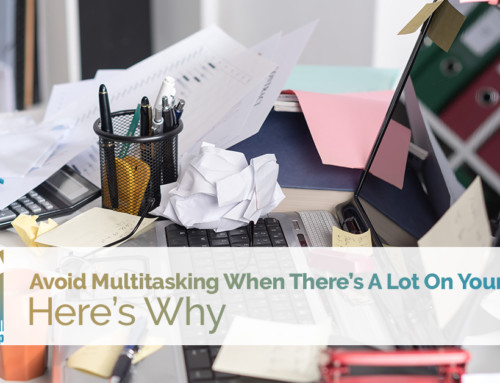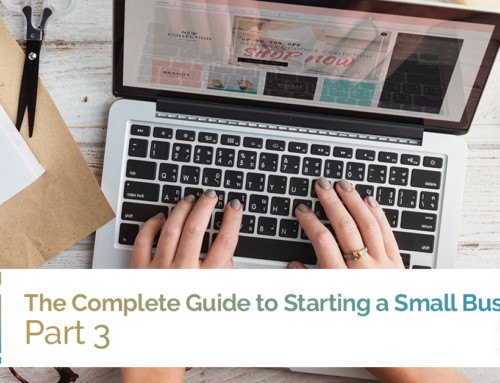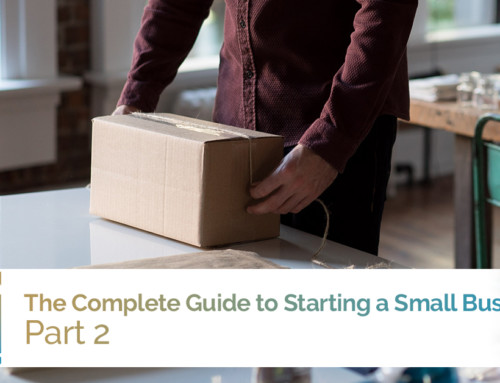Starting a small business is a huge part of the American dream—there’s something truly amazing about watching someone take a great idea and turn it into a living, thriving business that helps the local community and boosts the local economy. Having the freedom to build a business from the bottom up has led to some amazing accomplishments and innovations in society.
However, starting a small business isn’t easy. According to Fundera Ledger, only 80 percent of small businesses survive their first year in business. Sixty-six percent survive their second year in business. Fifty percent survive their fifth year in business. Only 30 percent survive their 10th year in business.
That’s not an amazing survival rate for small businesses. So what separates the businesses that survive from the ones that fail? Ultimately, it takes a concrete plan to keep a small business going past the 10-year mark.
In this blog from the Burbank asset-based lending experts at The Commercial Financial Group, we’ll cover the basics of starting a small business successfully and sustaining that business in the short-term and the long-term. Welcome to The Complete Guide to Starting a Small Business.
Write a one-page business plan.
Why one page, exactly? The answer is simple: if you can’t explain your business goals, objectives, mission, and vision in a single page, then how are you going to efficiently explain these things to lenders, employees, trustees, and the like? The overall reason for your business existing should be crystal clear to anyone who asks about it—that’s how you gain public support, secure financing, and ensure short- and long-term business growth.
But what exactly goes into this one-page business plan, and how does it guide your business? Let’s take a look.
What’s your mission?
This is the reason your company exists—the driving force behind your business operations and the reason customers find value in what you have to offer. How are your services helping your community? How do your products provide value to the people who buy them? Your mission isn’t what you’re selling—it’s why you’re selling it.
Understanding your mission as a business (and being able to verbalize that mission) is incredibly important for your success—it’s the emotional core of what your business does every day. Once you learn how to explain your mission to employees, customers, and external collaborators like investors, you see much more business success and receive much more support.
What’s your vision?
When it’s all said and done, what will your business look like? Will you have 3,000 employees and your own campus? Will you exceed $5 million in annual profit? Will you provide support to 10 million customers? You can’t drive the road to success if you don’t know where the road is going—so think about what all of that hard work on a day-to-day basis is supposed to amount to.
Your business vision should be somewhere in between grand and realistic—it should push for business forward and seem like a challenge, but it shouldn’t be fantastical or unreachable. Your T-shirt sales website probably isn’t going to make $50 million in profit in 10 years—but it’s very possible that it reaches a million or two if you work hard and sell shirts that are in demand.
Whether you reach your ultimate vision or not, your business vision is your ultimate guide for short-term and long-term business decisions.
What are your objectives?
If your business vision your end destination on the road to success, then your objectives are every stop you make on the way there. In order to achieve long-term success, you need to have short-term goals and checkpoints that will keep you on track—these goals will help you stay focused week over week, month over month, and year after year.
It’s important to note that objectives should be fluid. You’re not always going to hit your one-year sales goal or reach your goal profit. In times when you fall just short of your goals, create new goals and adjust them to be challenging in nature, but a bit more realistic. This will keep you and your employees motivated in the long-term, and will help everyone involved with your business to work just a little bit harder for the common good.
How does a business plan guide your business internally?
Ultimately, your one-page business plan is the final word when it comes to the direction of your business today and in the future. You’re going to have to make 84939378595 difficult business decisions during your career, and for each one of them, you must ask: does this align with my business plan? Does it guide the business toward the vision? Does it meet company objectives? Does it further the overall mission? Your business plan is designed to keep your business on track for years to come—so know it forwards and backwards, hang it in your office if you have to, and keep it in mind with every course of action you take.
Build your budget.
One of the most important goals of your business is to keep costs as low as possible for maximum profit. However, it’s important to be realistic when it comes to expenses and revenues so you can create a sustainable budget for the short-term and the long-term. A budget isn’t just about how much you’re willing to spend every month—it’s about having a realistic picture of your projected revenue, and planning ahead for unexpected costs with some form of a financial safety net. It’s also important—especially when you’re starting a business—to know where your initial funds are coming from, whether it’s from your own pocket, from outside investors, or from a small business loan. Unless you’ve somehow enticed Silicon Valley with your small business idea, you’re probably going to have to debate between self-funding and a small business loan to get going. So where do you start?
Self-funding or small business loan?
Every new business is different—they have specialized financial needs, unique goals, and varying degrees of feasibility when it comes to business success. But more often than not, businesses that are just starting out will need to blend a small business loan with their own funds to get things going.
No secret here—starting a small business is incredibly difficult when you’re going it alone from a financial perspective. There are so many expenses, expected and unexpected, that can burn through your business funds in an instant, and usually, prospective small business owners do not have enough saved up to deal with these unexpected expenses and keep their businesses afloat in the early stages.
On the other hand, it makes zero sense for a small business lender to hand over the keys to the proverbial safe and fund a small business venture entirely. Those who ask for 100 percent of the funds needed to start a business show that they haven’t made enough of an investment themselves—that they’re not truly committed enough to the business to put their own money on the line to get things started. For lenders, that’s just not a risk worth taking.
Fortunately, the mix between self-funding and a small business loan is beneficial for everyone involved. Self-funding motivates the lender and the business owner, and shows there’s a real investment and commitment being made to ensure the success of the business. A small business loan is perhaps more important than self-funding, if only because it allows businesses to grow, evolve, and deal with crisis easier than they would if they were fully self-funded. You must spend money to make money—and that it obvious when it comes to small business loans. With a little investment up front, small businesses have the financial power they need to get in the groove and sustain a path toward long-term growth and success.
This is the exact mindset behind working capital solutions from The Commercial Financial Group. Asset-based lending is a great option for small business with marginal starting cash flow or unpredictable earnings, allowing these businesses to augment their growth, accelerate their equity value, and get access to important capital for short- and long-term business success. Get in touch with us if you have any questions, and fill out an online application today.
That’s it for Part 1 of The Complete Guide to Starting a Small Business. Stay tuned for Part 2 and Part 3, and check out our other blog posts in the meantime.







